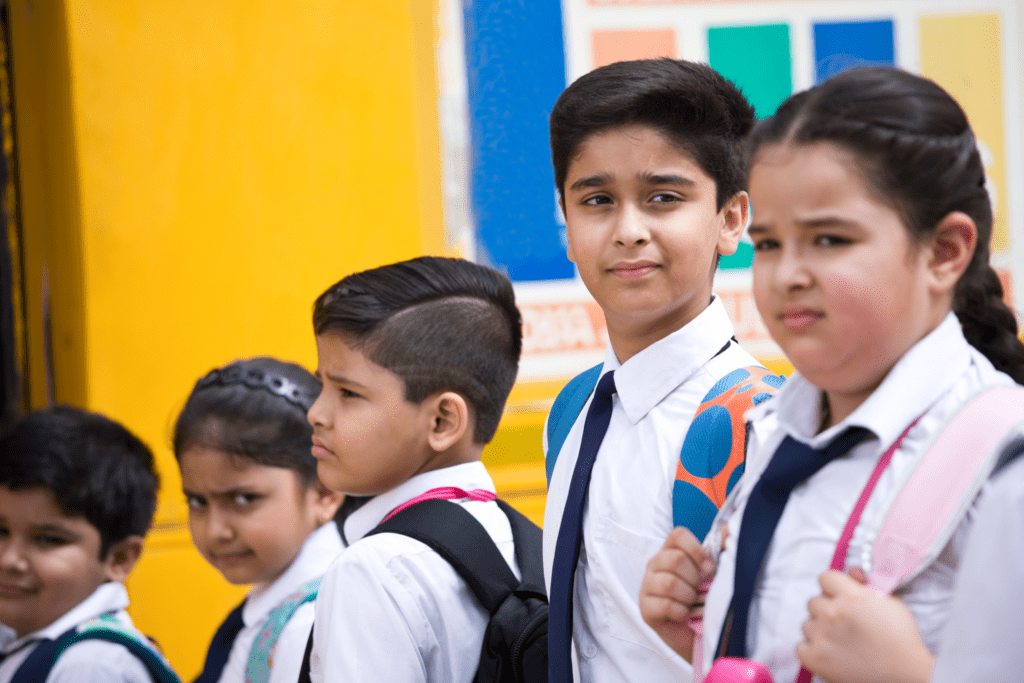Skip to the tips!
- Primary students need reassurance but don’t coddle them.
- Draw firm boundaries.
- Don’t just check off the boxes, make sure they learn something.
- Have fun!
When I first started my teaching journey, I decided that I wanted to teach high school. I worked at a daycare for many years, and I thought that I just couldn’t handle dealing with younger children day-in and day-out. They hug your legs, pick their noses, and just talk and ask questions all of the time. I was much more comfortable with teenagers who didn’t want anything to do with me! I could engage the toughest teenagers, the most cool-for-school, but I didn’t know what to do with a child that just needed my attention constantly. Learning how to be a relief teacher for younger students took some practice.
See more: How to Manage Attention-Seeking Behaviour in School Students.
When I finished studying at uni to be a high school teacher and started looking for relief teacher work, I struggled to find many high schools that needed new relief teachers. I thought that I’d just have to hit more schools, have a more impressive looking resume, and wait for the right opportunity to come up. Well, that opportunity did come up when a friend said that their school was desperate for new relievers, but their school was a primary school.
My first day as a relief teacher in an primary school
I will say I was incredibly nervous walking through those gates. Looking back on it now, I’m not entirely sure why but just seeing all of the tiny children with their clothes and bags that were too big for them, and hand held tightly by their parents made me feel a little nauseous. I entered that classroom, and the first thing that hit me was the noise.

I’d been in many classrooms before throughout my prac teaching and the little bit of relief work that I’d had, but it was all at high school. Noise was something that teenagers made too, but not when they’re sitting down ready to learn and certainly not first thing in the morning. Just making sure that everyone got into the door was a struggle. I learnt a lot that day, from those students:
1. Primary students need reassurance, but don’t coddle them
Most of the time when one of those little ones came to me with a question, they already knew the answer. Sometimes they new half of the answer or could guess correctly, but they had not been paying 100% attention while instructions were being given or while a concept was being explained. They do need a little patience, but it is difficult for kids to pay complete attention for very long, yet alone an entire lesson.
In the classroom, they are learning far more than what you are explicitly teaching them; they are learning how to interact with other people, how to understand themselves and their own emotions, as well as just simply learning to pay attention. That being said, it is something that they need to learn and you should not support them to the point of reliance, but it was something that I found useful to keep in mind.
2. Draw firm boundaries
If you don’t like students holding on to your clothes or hugging you from behind while you’re talking to someone else, tell them that. Many teachers believe that it’s just something that you should let them do to a certain degree, but if you’re uncomfortable with it you need to make that boundary clear and firm.
Not everyone in their lives are going to want the same physical contact that they get from their families and friends, and just like with the last point, this is a lesson that they need to learn. Learning to respond appropriately when someone says no to reinforce a personal boundary is also something that does often need to be taught, and the earlier the better.
3. Don’t just check off the boxes, make sure they’re learning something.
I had a list of things that we needed to get through that day. They had reading, then spelling, then math, then a break before science. Each lesson for the day and a list of learning intentions and tasks that were to be completed. I quickly found that getting through my entire list for the day was going to be impossible. I felt really bad about that, like I had failed.
Talking to the teacher in the next room after class about it though, she laughed and said that she would be worried if I did! She told me something that I’ve never forgotten, and is still a huge part of my teaching philosophy years later – it’s better that they learn one thing, than are told a list of things.

This is not a secret, and I’m sure that any primary teacher that you are covering for would much rather you taught their students something rather than felt like you had to work your way through every task. This is something that I had to get used to, as high school is a little different when you have limited time to get students prepped for their final exams and such.
4. Have fun!
Making sure that there is time for play, rest, and socialisation in the day is not only something that will help the students decompress, but also you! Young students struggle to stay still and sitting for long periods of time, so don’t resist it – manage it instead. Give them structured breaks and some quick and fun activities to break up the day. Your students are far more likely to stay engaged, build rapport with you, and you won’t have to be fighting them for the entire day!
The key thing that I want to emphasise to any secondary-trained teachers who are getting into relief or relief teaching is to keep your options open. If you widen your pool of possible employers, you are more likely to get work. While working with younger students is quite different and certainly isn’t for everyone, in the short term, it may be worth considering.
If you are hoping to get a contract or full-time role in a school, your time as a relief teacher is valuable time to go and work in a range of schools in a range of contexts with a range of different students. You don’t have to be teaching primary school every day, but it’s worth the shot and definitely worth it to build your skills and confidence in the classroom.
Are you a high school teacher who has done some work in primary schools? Are you a primary teacher who ended up teaching secondary? We’d love to hear about your experiences in the comments below!
To have a look at some more tips about starting your journey as a relief teacher, check out Six things I wish I knew as a relief teacher.





